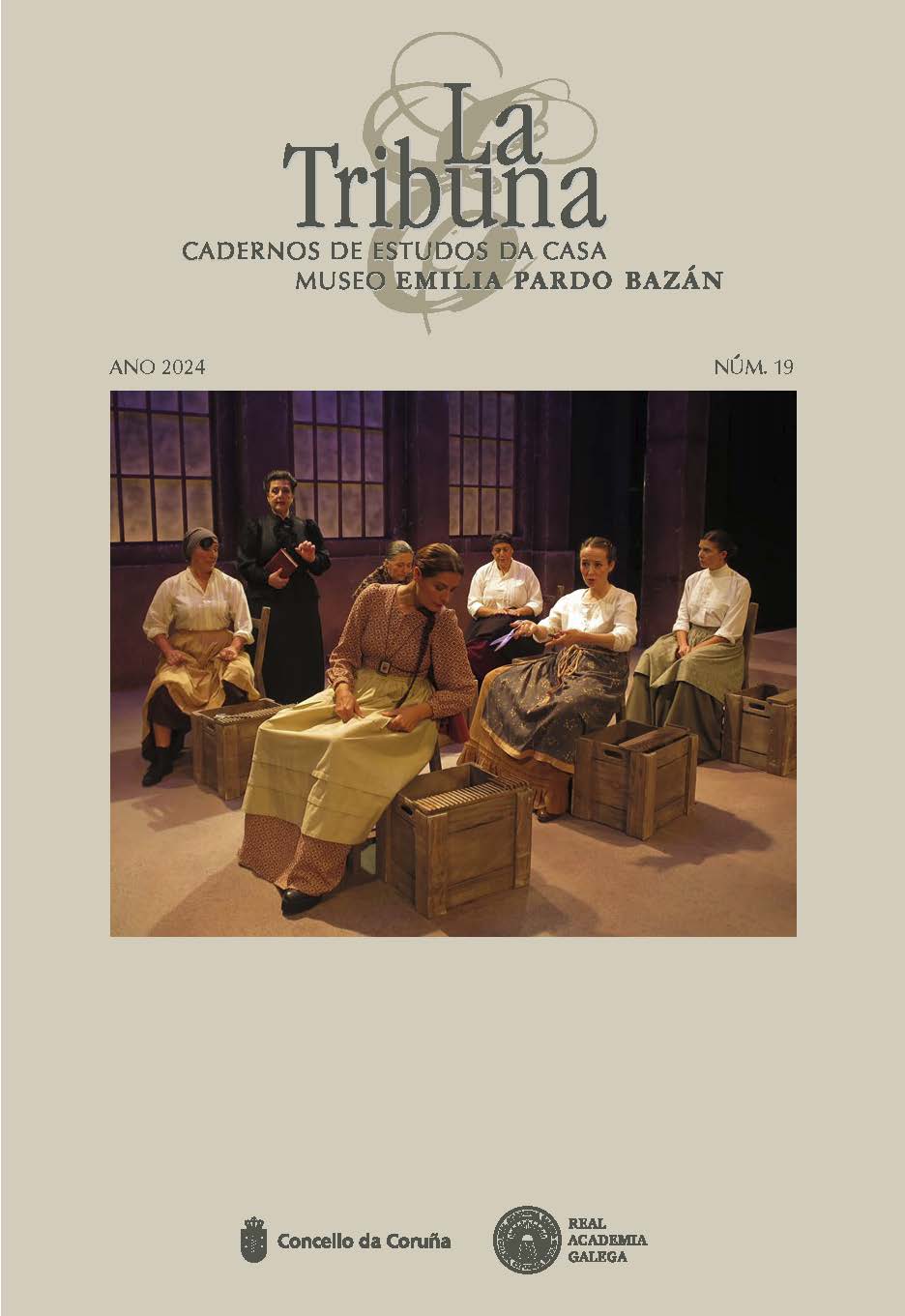De estampitas y películas: postales, cine y transformación social en un análisis cultural de Pardo Bazán
Downloads
Published
Issue
Section
License
LICENZA DE USO: Os artigos a texto completo incluídos no noso portal son de acceso libre e propiedade dos seus autores e/ou editores. Calquera acto de reprodución, distribución, comunicación pública e/ou transformación total ou parcial require o consentimento expreso e escrito daqueles. Toda ligazón ao texto completo dos artigos do noso portal debe efectuarse ao noso URL.
DOI:
https://doi.org/10.32766/tribuna.19.360Keywords:
Postales, cine mudo, Pardo Bazán, medios de comunicación, fin de sigloAbstract
In an 1898 article of La vida contemporánea for La Ilustración Artística, Emilia
Pardo Bazán advocates for the use of postal cards because they cost less, but are just as trustworthy
as letters. Yet only three years later, the author would offer a resounding criticism of this means of
interpersonal communication. Likewise, although later she would praise cinema on account of its
unexpected narrative capacity, in 1908 she pronounces a negative judgement on this innovative
mass medium. With a theoretical and methodological framework that we would define today as
cultural studies, Pardo Bazán presents her reservations regarding both media in similar terms. Her
epistemological approach questions the value of the immediate, visual, and instinctive qualities
they offer, valuing instead that which is procedural, textual, and pondered. This approach ultimately
reveals her opinion about the dichotomy between the irrational and the rational in literature and
the arts. Not only does Pardo Bazán point out the harmful influence of some aspects of foreign
modernity, but she also warns the readers about the unwanted individual and social transformations
that arise when the medium is identified with the message, or, in the author’s words about
postcards, “la estampita” with “el asunto.” For Pardo Bazán, postcards and cinema will only be
dignified media when they acquire a “pedagogical” and “patriotic” narrative, albeit to the detriment
of their visual nature.


